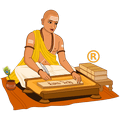























Sunrise06:10 AM
Sunset05:13 PM
MoonriseNo Moonrise
Moonset04:39 PM
Shaka Samvat1762 Sharvari
Vikram Samvat1897 Virodhakrit
Gujarati Samvat1896 Virodhakrit
Amanta MonthAshwina
Purnimanta MonthKartika
WeekdayShaniwara
PakshaKrishna Paksha
TithiAmavasya upto 01:06 AM, Oct 25
YogaVishkambha upto 11:53 AM
KaranaChatushpada upto 12:38 PM
KaranaNagava upto 01:06 AM, Oct 25
Pravishte/Gate11
Rahu Kalam08:56 AM to 10:19 AM
Gulikai Kalam06:10 AM to 07:33 AM
Yamaganda01:05 PM to 02:28 PM
Abhijit11:20 AM to 12:04 PM
Dur Muhurtam06:10 AM to 06:54 AM
Dur Muhurtam06:54 AM to 07:38 AM
Amrit Kalam11:13 AM to 12:54 PM
Varjyam11:57 PM to 01:40 AM, Oct 25
Notes: All timings are represented in 12-hour notation in local time of San Juan Capistrano, United States with DST adjustment (if applicable).
Hours which are past midnight are suffixed with next day date. In Panchang day starts and ends with sunrise.


 Tula
Tula Swati 11:52
Swati 11:52

 Vrishchika
Vrishchika Anuradha 16:34
Anuradha 16:34

 Vrishchika 19:27
Vrishchika 19:27 Jyeshtha 19:27
Jyeshtha 19:27

 Kumbha
Kumbha Dhanishtha 07:13
Dhanishtha 07:13

 Meena
Meena P Bhadrapada 07:37
P Bhadrapada 07:37

 Meena 29:25+
Meena 29:25+ U Bhadrapada 06:48
U Bhadrapada 06:48

 Mesha
Mesha Bharani 25:36+
Bharani 25:36+

 Vrishabha 08:25
Vrishabha 08:25 Mrigashira 19:30
Mrigashira 19:30

 Mithuna
Mithuna Ardra 17:52
Ardra 17:52

 Karka
Karka Pushya 15:40
Pushya 15:40

 Karka 15:08
Karka 15:08 Ashlesha 15:08
Ashlesha 15:08

 Tula
Tula Chitra 17:57
Chitra 17:57

 Vrishchika
Vrishchika Anuradha 24:15+
Anuradha 24:15+

 Vrishchika 27:05+
Vrishchika 27:05+ Jyeshtha 27:05+
Jyeshtha 27:05+

 Dhanu
Dhanu Mula 30:07+
Mula 30:07+In Hindu Calendar, the day starts with local sunrise and ends with next day local sunrise. As sunrise time is different for all cities, Hindu Calendar made for one city is not valid for any other city. Hence it is important to use location based Hindu Calendar, like this website. Further, each Hindu day consists of five elements, which are called angas. These five elements are -
In Hindu Calendar, all five elements together are called Panchang. (In Sanskrit: Panchang = Pancha (five) + Ang (part)). Hence Hindu Calendar which shows all five elements for each day is called Panchang. In South India Panchang is known as Panchangam.
When Hindu Calendar includes Muslims, Sikh, Christian, Buddhist and Jain festivals, including national holidays, it is called as Indian Calendar.